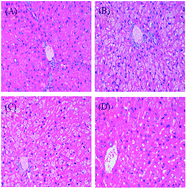The beneficial effects of purple yam (Dioscorea alata L.) resistant starch on hyperlipidemia in high-fat-fed hamsters
Abstract
In this study, we investigated the interventional effect of resistant starch (RS) obtained from purple yam (Dioscorea alata L.) on regulating lipid metabolism and gut microbiota in hyperlipidemic hamsters. Compared to low level RS (LR) treatment, high dosage of RS (HR) administration in hamsters was shown to be more efficient in controlling the body weight and adipose tissue mass, and increased high-density lipoprotein cholesterol (HDL-C) concentration and decreased triglyceride (TG), total cholesterol (TC), and low-density lipoprotein cholesterol (LDL-C) concentrations were observed. Fat accumulation in the liver was reduced by RS, and the injury caused due to a high-fat diet on the histomorphology of the cecum and colon was repaired. Furthermore, HR altered the gut community composition by increasing the relative abundances of Bifidobacteria, Lactobacillus, Coprococcus, and Allobaculum, while decreasing Parabacteroides and Dorea. Probiotics, such as Bifidobacteria and Lactobacillus, were dramatically increased and highly correlated with blood lipid levels. These results suggested that the usage of RS obtained from purple yam could ameliorate lipid metabolism in association with gut microbiota modulation, which could provide references for further medication.



 Please wait while we load your content...
Please wait while we load your content...